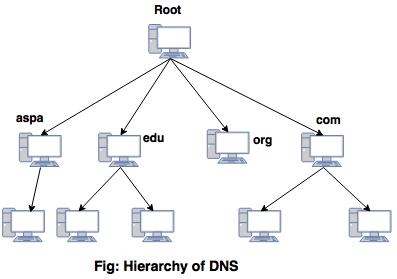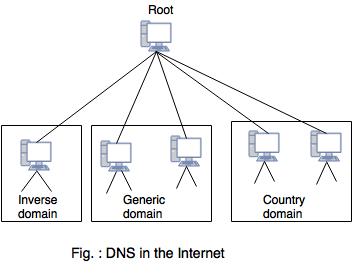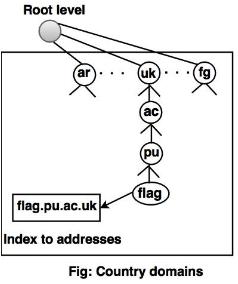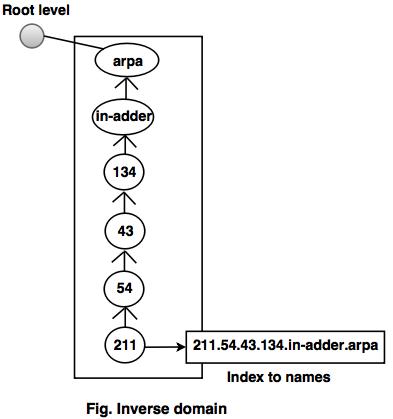Domain Name System in Computer Network
Domain Name System
- Domain Name System is an Internet service that translates domain names into IP addresses.
- The DNS has a distributed database that resides on multiple machines on the Internet.
- DNS has some protocols that allow the client and servers to communicate with each other.
- When the Internet was small, mapping was done by using hosts.txt file.
- The host file was located at host's disk and updated periodically from a master host file.
- When any program or any user wanted to map domain name to an address, the host consulted the host file and found the mapping.
- Now Internet is not small, it is impossible to have only one host file to relate every address with a name and vice versa.
- The solution used today is to divide the host file into smaller parts and store each part on a different computer.
- In this method, the host that needs mapping can call the closest computer holding the needed information.
- This method is used in Domain Name System (DNS).
Name space
- The names assigned to the machines must be carefully selected from a name space with complete control over the binding between the names and IP addresses.
- There are two types of name spaces: Flat name spaces and Hierarchical names.
Flat name spaces
- In a flat name space, a name is a sequence of characters without structure.
- A name in this space is assigned to an address.
- The names were convenient and short.
- A flat name space cannot be used in a large system such as the internet because it must be centrally controlled to avoid ambiguity and duplication.
Hierarchical Name Space
- In hierarchical name space, each name consists of several parts.
- First part defines the nature of the organization, second part defines the name of an organization, third part defines department of the organization, and so on.
- In hierarchical name space, the authority to assign and control the name spaces can be decentralized.
- Authority for names in each partition is passed to each designated agent.

DNS in the Internet
- DNS is a protocol that can be used in different platform.
- Domain Name Space is divided into different sections in the Internet: Generic domain, country domain and inverse domain.

Generic Domains
The generic domains define registered hosts according to their generic behavior.
Generic domain labels are as stated below:
1. Country Domains- Country domain uses two character country abbreviations.
- Second labels can be more specific, national designation.
- For example, for Australia the country domain is “au”, Inida is .in, UK is .uk etc.
 2. Inverse Domains
2. Inverse Domains- Inverse domain is used to map an address to a name.
- For example, a client send a request to the server for performing a particular task, server finds a list of authorized client. The list contains only IP addresses of the client.
- The server sends a query to the DNS server to map an address to a name to determine if the client is on the authorized list.
- This query is called an inverse query.
- This query is handled by first level node called arpa.




